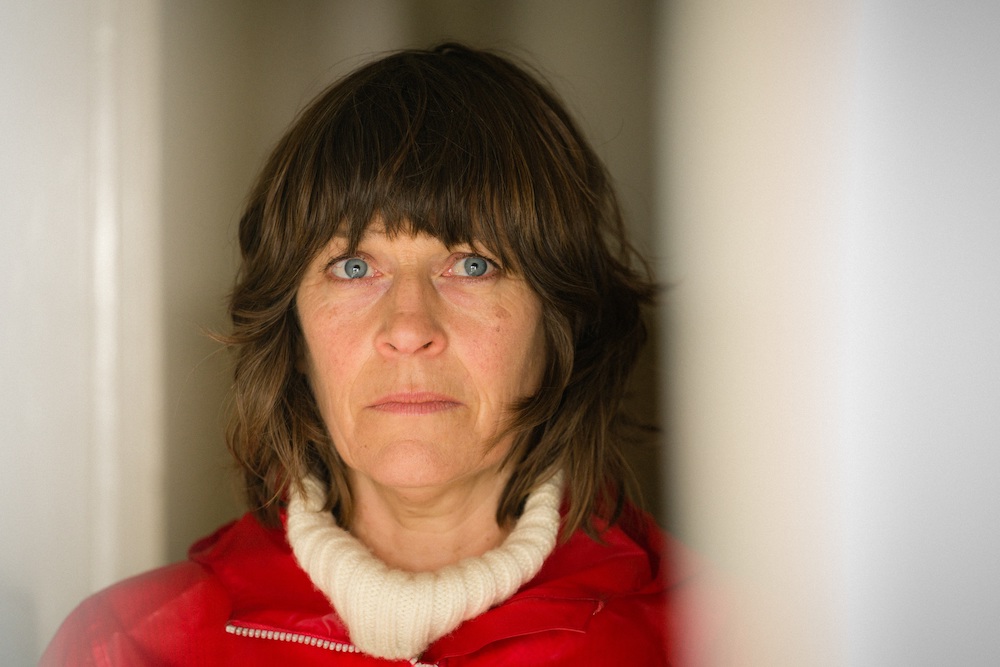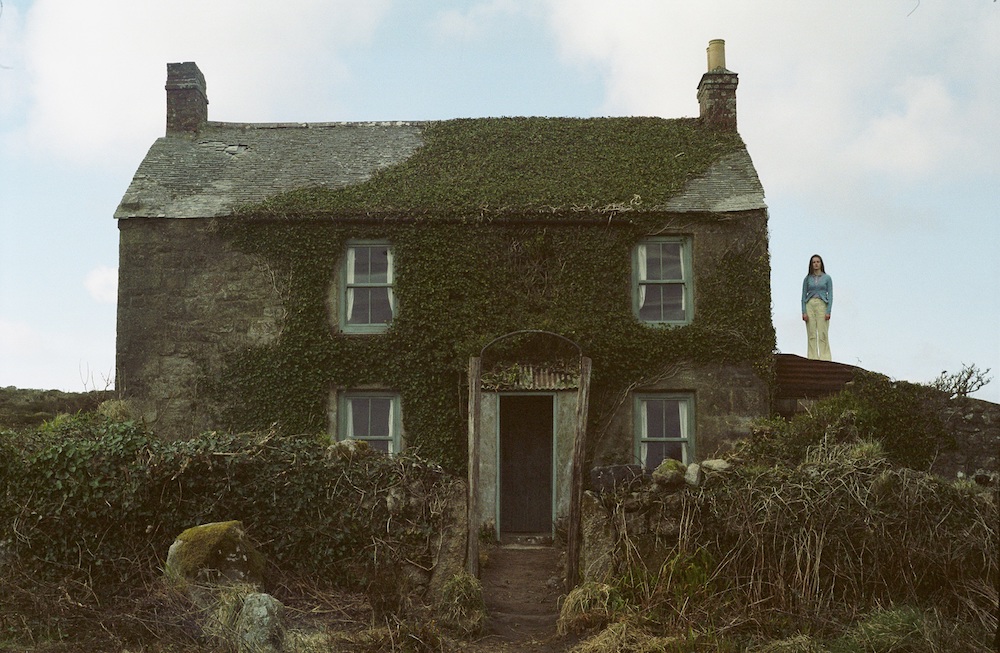Unlike the black and white Bait, Mark Jenkin’s highly acclaimed previous film, Enys Men (stone island in Cornish) is full of colour. Strange, saturated colour that doesn’t look quite real: a deep blue sea, a bright red raincoat, yellow gorse against brown bracken. And the flowers around which this abstract plot revolves don’t look real either. Such elongated stems and waxy white petals look like they come from outer space, not a windy Cornish coastline.
Jenkin says the film, though not a direct homage to low-budget horror films of the 1970s, was created using a similar production process, and that the horror – he sees it as Cornish folk horror – would be in the form and not necessarily in the content. It’s never a good sign if you have to scour a director’s statement for clues, but Enys Men is not easy to interpret, or, for that matter, to enjoy.
As well as directing, Jenkin writes, edits and scores. There is very little dialogue. As in Bait, Jenkin synchs it in the editing stage and uses the same 16mm film and clockwork Bolex camera, though with more lenses, including a zoom. And, for most of the time, there’s only one protagonist, known as the Volunteer, played by Mary Woodvine, Jenkin’s partner (pictured below). She also played, brilliantly, the posh incomer in Bait, where his unique film process complemented the compelling storyline about gentrification and struggling fishermen so well.
In Enys Men she’s alone on the island, apart from mysterious visitations, stuck in a solitary, never-ending loop of measuring the strange flowers and recording the results, along with the dates in April and May 1973, and temperature – 14.4 C – in a ledger. No change, she writes. You may find yourself heaving a sigh.
 After measuring the flowers, she drops a stone into a disused mineshaft, as if compelled. At home, always dressed in jeans and a white polo neck, she listens to scratchy music on a grimy Dansette, puts the kettle on to boil for tea in a blue teapot, pulls the cord on the generator (red, to match her jacket) and often ignores messages on the two-way radio even though her supplies are running low. Sometimes she has a bath. In bed, by candlelight, she reads A Blueprint for Survival by ecologist Edward Goldsmith, published in 1972. She looks out of her doorway at the huge, menacing standing stone on the moorland. Sometimes the rock isn’t there.
After measuring the flowers, she drops a stone into a disused mineshaft, as if compelled. At home, always dressed in jeans and a white polo neck, she listens to scratchy music on a grimy Dansette, puts the kettle on to boil for tea in a blue teapot, pulls the cord on the generator (red, to match her jacket) and often ignores messages on the two-way radio even though her supplies are running low. Sometimes she has a bath. In bed, by candlelight, she reads A Blueprint for Survival by ecologist Edward Goldsmith, published in 1972. She looks out of her doorway at the huge, menacing standing stone on the moorland. Sometimes the rock isn’t there.
 A girl (Flo Crowe, pictured above) appears, perched on the glass roof of a lean-to or lying in bed asleep. “Please don’t climb up there," the woman says, as if she’s said it many times before. Is this her dead daughter? The huge scar on the Volunteer’s stomach seems to provide a kind of answer after we see the girl fall through the roof, breaking glass as she goes. The scar and the flowers are connected – both grow lichen at the same time, more of it every day.
A girl (Flo Crowe, pictured above) appears, perched on the glass roof of a lean-to or lying in bed asleep. “Please don’t climb up there," the woman says, as if she’s said it many times before. Is this her dead daughter? The huge scar on the Volunteer’s stomach seems to provide a kind of answer after we see the girl fall through the roof, breaking glass as she goes. The scar and the flowers are connected – both grow lichen at the same time, more of it every day.
As well as the girl, there are sightings of ghostly tin miners, women in traditional costumes and maidens in white, dancing and singing, a reference – the director’s statement again – to a legend about girls who were turned to stone as punishment for dancing on a Sunday. A preacher, played by Mary’s father, the actor John Woodvine, intones, “Trim your feeble lamp, my sister,” from the hymn "Brightly Beams Our Father’s Mercy".
The woman seems to be haunted by her past. Time is not linear. You start to feel trapped in her nightmare. You wish it would end. Sometimes it verges on parody, with screams that don’t relate to anything much. In the bathroom, she sees a man (Edward Rowe, also familiar from Bait), who then leaves without a word. Is he the same man who brings supplies in his boat and who drinks tea and eats saffron buns with her? “Do you like it here on your own?” he asks. “I’m not on my own,” she replies in a rare exchange. They seem to have had a relationship at some point. Is he dead, drowned at sea? Is everything a memory, the Volunteer revisiting her past again and again?
Perhaps there’s no point trying to find meaning. You’re left with an unsettling sense of pain rather than horror – nothing scary here – though the sound, with its rhythmic clanks and rattles, lingers in the head, as does the landscape and its colours.
- The Cinematic DNA of Enys Men season, with selected films curated by Mark Jenkin, runs at BFI Southbank until 31 January














Add comment